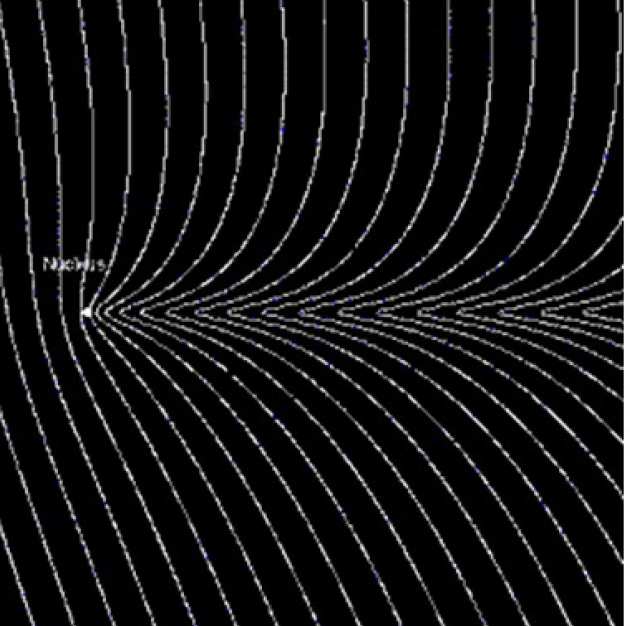What are comets?
Comets are bodies that were formed when the Solar System was young. At the heart of every comet is a nucleus. A comet's nucleus is typically a few kilometres across, and is made of a mixture of ice and dust.
Most comet nuclei travel around the Sun in very elongated orbits that take them to the very edge of our Solar System. Most take thousands of years to complete their journeys about the Sun. Some have made close approaches to the planets, which have put them in shorter-period orbits (Comet Encke has the shortest orbital period known, at 3.3 years).
When a comet nucleus approaches the Sun, it's heated - the ice at the surface of the nucleus melts, and jets of gas and dust are given off.
There are two main types of comet tails. They are formed from the gas and dust given off by the nucleus.
Most of the dust particles given off by the nucleus are tiny. So tiny is fact that they can be pushed about by the pressure of sunlight alone. Sunlight pushes back the dust particles, forming a dust tail. This tail can be seen remotely due to it reflecting sunlight.
 The gases given off by the nucleus become electrically charged by several processes, forming ions. There is a constant stream of charged particles flowing from the Sun at several hundred kilometres per second, called the solar wind. As soon as the gas particles are charged, they are under the influence of this wind, which carries them away from the Sun. This forms the ion, (or plasma) tail. The ion tail can be seen because the ions within it fluoresce. The abundant ions which have the longest lifetimes are CO+ (carbon monoxide) ions - these glow with a blue colour; hence an ion tail usually appears blue.
The gases given off by the nucleus become electrically charged by several processes, forming ions. There is a constant stream of charged particles flowing from the Sun at several hundred kilometres per second, called the solar wind. As soon as the gas particles are charged, they are under the influence of this wind, which carries them away from the Sun. This forms the ion, (or plasma) tail. The ion tail can be seen because the ions within it fluoresce. The abundant ions which have the longest lifetimes are CO+ (carbon monoxide) ions - these glow with a blue colour; hence an ion tail usually appears blue.
When ions are added to the flow of the solar wind, the wind acquires extra mass. To conserve momentum, the wind has to slow down. So, at the centre of the tail, there is a flow of ions moving more slowly than the material at the edge of the tail. The solar wind's magnetic field lines are carried through the comet, but when they encounter this sheared flow, they become kinked.
In the diagram on the right the solar wind is flowing from the left to the right, carrying the magnetic field lines. As the magnetic field lines are carried through the comet, they are kinked by the sheared flow. This type of kinked magnetic field is what's expected to be seen in a comet's ion tail.
A third type of tail also exists, made of sodium, but which has only been seen clearly in one comet - C/1996 O1 (Hale-Bopp).
Have any other spacecraft visited comets?
Yes - the first to visit a comet was the NASA-led International Cometary Explorer, which encountered Comet Giacobini-Zinner in 1985.
In 1986, The European Space Agency's Giotto, the USSR-led Vega-1 and Vega-2, the Japanese Suisei and Sakigake, and the International Cometary Explorer visited Comet Halley.
In 1992, Giotto encountered Comet Grigg-Skjellerup.